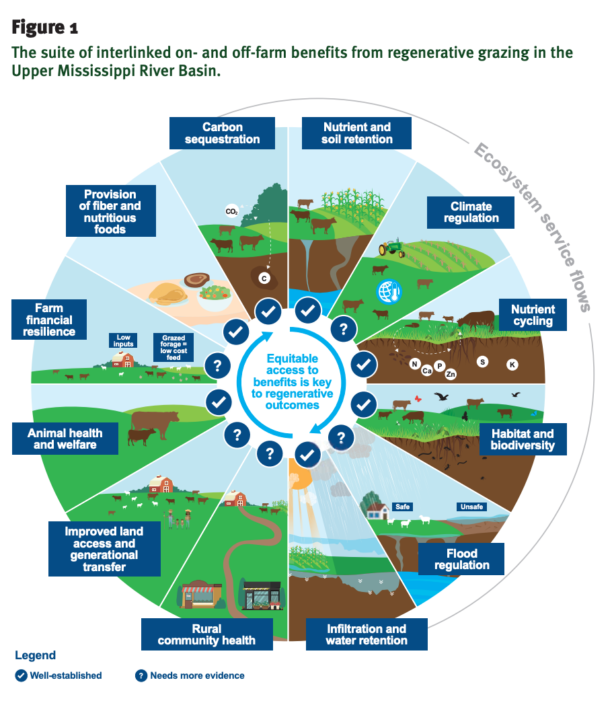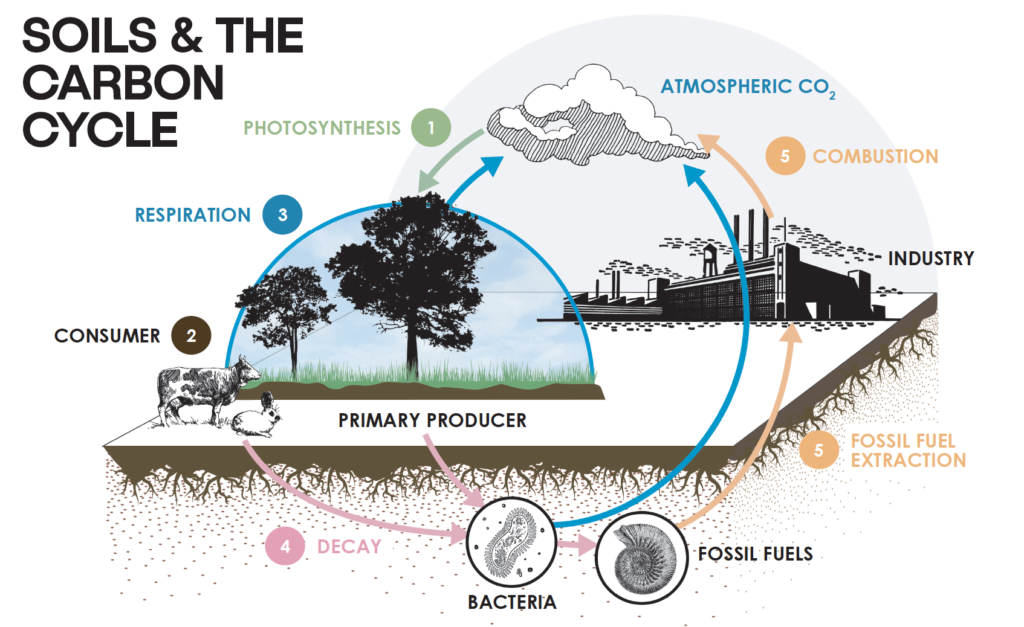
Regenerative Agriculture Carbon Sequestration refers to the process of using farming practices that promote soil health and biodiversity while capturing atmospheric CO2 in soils, plants, and other ecosystem components.
Key principles:
- Soil conservation: Implementing techniques like no-till or reduced-till farming, cover cropping, and incorporating organic amendments to minimize erosion and preserve soil structure.
- Carbon-rich crop rotations: Rotating crops that enhance carbon sequestration in soils through practices such as legume-based systems or using nitrogen-fixing plants.
- Organic matter addition: Adding compost, manure, or other organic materials to improve soil fertility while promoting microbial activity and enhancing carbon storage capacity.
- Cover cropping: Planting cover crops during off-seasons to protect the soil from erosion, add nutrients, and sequester CO2 through photosynthesis.
Carbon Sequestration Mechanisms:
- Soil Carbon Sequestration: Soil microorganisms break down organic matter into stable carbon compounds that can remain in soils for centuries.
- Plant Biomass Storage: Plants absorb atmospheric CO2 during growth and store it within their biomass, which is then returned to the soil as organic matter through decomposition or harvest.
- Soil Microbial Carbon Sequestration: Soil microorganisms contribute to carbon sequestration by breaking down complex organic molecules into simpler compounds that can be stored in soils.
Benefits of Regenerative Agriculture:
- Climate Change Mitigation: By capturing atmospheric CO2 and storing it within ecosystems, regenerative agriculture practices help mitigate climate change.
- Soil Health Improvement: These farming techniques enhance soil fertility, structure, and biodiversity while reducing erosion risk.
- Increased Crop Yields: Regenerative agriculture can lead to improved crop yields due to enhanced soil health and increased water retention capacity.
Examples of successful regenerative agriculture projects:
- The Soil Health Institute's (SHI) Regenerative Agriculture Program, which promotes regenerative practices through technical assistance, research, and education.
- The Rodale Institute's Farming Systems Trial, a long-term study on the effects of different farming systems on soil health, biodiversity, and carbon sequestration.
- The Savory Institute's Holistic Management approach, which integrates livestock grazing with regenerative agriculture practices to enhance ecosystem services.
Challenges and limitations:
- Scalability: Regenerative agriculture requires significant changes in land use management practices that can be challenging to scale up globally.
- Monitoring and verification: Accurately measuring carbon sequestration rates within these ecosystems is complex due to factors like soil type, climate conditions, or changes in vegetation density.
- Land-use conflicts: Competing demands for land use (e.g., urbanization, agriculture) can compromise ecosystem conservation efforts.
Despite these challenges, Regenerative Agriculture Carbon Sequestration offers a promising approach to mitigating climate change by leveraging the natural carbon sequestration potential of ecosystems while promoting soil health and biodiversity.

